I've made this dish three times now, my kids love it! The ginger gives it a nice kick.
Nasu Nibitashi Recipe - Braised Eggplants Recipe ( 茄子煮浸し )
Recipes > Japanese Recipes > Japanese Side Dish Recipes
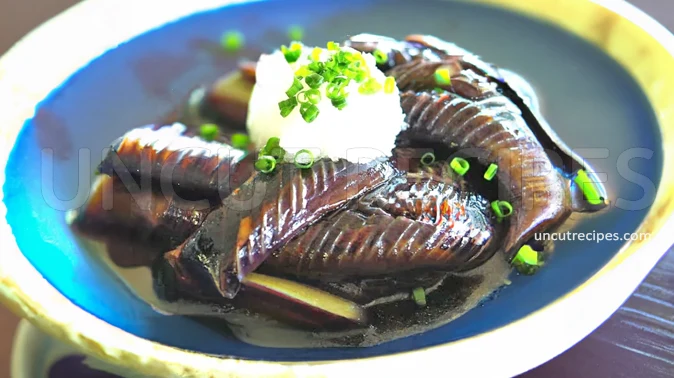
Today, we're going to cook a flavor-packed Japaese dish called Nasu Nibitashi, a traditional Braised Eggplants dish. While you may not find this soul-soothing dish in many restaurants, it's a firm favorite in Japanese homes, prized for its simplicity and robust flavors.
So, why eggplants? In Japanese cuisine, eggplants are highly revered for their ability to act as flavor sponges. They absorb whatever they're cooked in, maintaining their unique texture and taste all the while. In the case of Nasu Nibitashi, it's a delightful dance of sweet, salty, and umami flavors that showcase the charm of these versatile veggies.
A unique aspect of Nasu Nibitashi is the eggplant variety used. Japanese eggplants, darker and skinnier than their American counterparts, offer a distinct taste that beautifully complements the flavors in this dish.
Now, let's paint a picture: You're in a cozy kitchen, rolling up your sleeves, ready to work some culinary magic. As you're scoring and slicing your eggplants, the anticipation builds. Then comes the sizzle as the eggplants meet the hot oil. The combined aroma of soy sauce, mirin, and sake brings the dish to life, evoking the feel of a tranquil Japanese home brimming with dinner preparations.
The brilliance of this dish lies in the Nibitashi technique, a traditional method of braising vegetables in seasoned broth. And here's the secret: Letting the eggplants cool down in the sauce, absorbing every ounce of flavor. It may sound simple, but this little step unlocks a depth of flavor that's quintessentially Japanese.
As you tuck into this dish, revel in its elegance and the harmonious balance of flavors. Nasu Nibitashi is more than a recipe—it's an exercise in the art of subtlety, a key aspect of Japanese cooking, and a testament to the healthy, oil-free cooking techniques used widely in Japan.
JUMP TO:
INGREDIENTS:
Japanese Eggplant: This recipe calls for a specific type of eggplant: the Japanese eggplant. Japanese eggplants are slender, long, and usually a deep purple color. They have a tender skin and a sweet, delicate flavor with minimal seeds, which makes them ideal for this recipe. When selecting a Japanese eggplant, look for ones that are firm to the touch with a glossy skin and that feel heavy for their size. If you can't find Japanese eggplants, Chinese eggplants are the closest substitute in terms of flavor and texture.
Dashi: Dashi is a fundamental broth in Japanese cooking, usually made from dried kelp (kombu) and dried bonito flakes (katsuobushi). If you want to make dashi at home, ensure you source high-quality ingredients for the best flavor. However, if you're short on time, instant dashi powder can be used, but be mindful as some brands can be high in sodium.
Mirin, Sake, Soy Sauce, and Sugar: These ingredients are essential in creating the sweet and savory sauce that characterizes Nasu Nibitashi. For mirin, look for "hon-mirin" (true mirin) which offers a complex sweet flavor without the high fructose corn syrup found in "aji-mirin". Sake contributes to the depth of flavor; opt for a dry, cooking sake. The soy sauce imparts a savory saltiness; traditionally brewed soy sauce has a fuller flavor than chemically produced alternatives. Finally, the sugar balances the flavors; you may adjust the amount depending on your preference for sweetness.
Ginger Root: The fresh ginger adds a spicy aromatic touch to the dish. Choose ginger root that is firm, smooth, and free of mold. If ginger root is not available, ground ginger could be used, but the flavor won't be as vibrant and fresh.
Oil: The oil is used for frying the eggplant, and a neutral oil is typically best. However, for a more authentic flavor, you might opt for a light sesame oil, which adds a subtle nutty flavor.
Chopped Green Onions: This garnish adds a splash of color and a fresh, slightly sharp flavor contrast. Choose green onions with firm, unblemished white parts and fresh-looking green tops.
MAIN STEPS:
Prepping and Cutting the Eggplants: It's crucial to make shallow, not deep, slits in the eggplant's skin. This helps the flavor penetrate the vegetable without causing it to fall apart during cooking. When cutting the eggplant, consistency is key. Aim for even-sized pieces to ensure uniform cooking.
Frying the Eggplants: Start with the skin side down to protect the tender flesh and maximize flavor absorption.
Adding Ingredients: The order and way you add your ingredients affect the overall dish. When you add the soy sauce, sake, mirin, sugar, and ginger, make sure to scatter them evenly across the eggplants, not just in one spot, to distribute the flavors evenly.
Simmering the Eggplants: The gentle simmering process is critical to infuse the eggplants with flavor. However, overcooking could turn them mushy. Keep an eye on the pot and adjust the cooking time as necessary. Remember, the eggplants will continue to cook in the residual heat after you turn off the stove.
Cooling Down in the Sauce: The post-cooking soak might seem unnecessary, but it's an important step that allows the eggplants to absorb more flavor from the sauce. Resist the temptation to skip this step!
Garnishing and Serving: When garnishing, remember to evenly distribute the green onions and ginger over the eggplants. This ensures every bite will have a bit of this refreshing topping, enhancing the overall eating experience.
SERVED WITH:
Starter: Miso Soup (Japan): A classic Japanese soup made from a dashi stock and miso paste, usually containing tofu and seaweed. It would provide a warm, savory start to the meal and complement the flavors in the Nasu Nibitashi.
Main Course: Teriyaki Chicken (Japan): This is a popular Japanese dish where chicken is broiled or grilled in a sweet soy sauce marinade. Its strong flavors would balance the subtle taste of the braised eggplants.
Side Dish: Jasmine Rice (Thailand): This subtly fragrant, slightly sticky rice would be the perfect side to soak up the delicious broth from the Nasu Nibitashi.
Side Dish: Kimchi (Korea): This traditional Korean side dish made from fermented cabbage and spices can add a spicy and tangy contrast to the soft and subtly sweet Nasu Nibitashi.
Main Course: Steamed Fish with Ginger and Scallions (China): This light and aromatic dish would complement the savory flavors of the Nasu Nibitashi without overpowering it.
Dessert: Green Tea Ice Cream (Japan): A creamy, sweet finish to the meal, this dessert will cleanse the palate after the hearty main and side dishes.
Drink: Sake (Japan): This Japanese rice wine can range from sweet to dry, and it would enhance the savory flavors of the meal.
ALTERNATIVES:
Side Dish: Imam Bayildi (Turkey): A classic Turkish dish that translates to 'the imam fainted', perhaps because of how delicious it is! This dish is made by simmering eggplants in olive oil with onions, garlic, tomatoes, and a mix of spices, which creates a flavorsome and aromatic side dish.
Main Course: Moussaka (Greece): This hearty and satisfying dish layers thinly sliced eggplant with a rich lamb and tomato sauce. It's all topped with a creamy béchamel sauce and baked to perfection, offering a heartier twist on the use of eggplants.
Main Course: Baingan Bharta (India): This traditional Indian dish features roasted and mashed eggplant cooked with onions, tomatoes, and a blend of fragrant spices. It’s a smoky, flavorful main dish that's perfect with some warm naan bread or rice.
Starter: Melitzanosalata (Greece): This is a Greek eggplant dip, similar to Baba Ganoush. Roasted eggplant is combined with olive oil, vinegar, and garlic to create a tasty dip perfect for serving as a starter with warm bread.
Side Dish: Ratatouille (France): A traditional French Provencal stewed vegetable dish, starring eggplant, zucchini, bell peppers, and tomatoes, slow-cooked in olive oil with garlic and herbs. A wonderful side dish showcasing the best of summer produce.
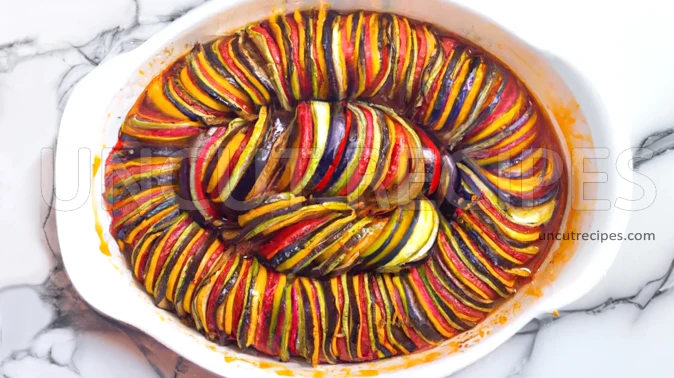
Main Course: Mapo Eggplant (China): A Sichuan classic, this dish features eggplant stir-fried with garlic, ginger, and a spicy bean paste, creating a flavorful and slightly fiery main dish.
Dessert: Candied Eggplant (Italy): While it may sound unusual, candied eggplant is a classic Italian sweet treat where eggplant pieces are simmered in sugar syrup with chocolate and cinnamon until they turn sweet and tender. It's a surprising and unique dessert that showcases the versatility of eggplants!
HISTORY:
Nasu Nibitashi, or Braised Eggplant, a hallmark of traditional Japanese cuisine.
Nasu Nibitashi, in its fundamental form, is a simple, delicate dish made by braising eggplant in a seasoned broth, typically a blend of soy sauce, mirin, and dashi. This humble recipe finds its origins in the ancient Japanese culinary concept of 'nimono,' a simmering technique used to slowly infuse flavors into vegetables, meats, and seafood.
The history of eggplant in Japan can be traced back to the Asuka period (592–710 AD), and the use of nimono techniques further back to the Heian period (794–1185 AD), suggesting that Nasu Nibitashi could have been a part of Japanese cuisine for centuries. However, the exact origin of the dish and its creator are shrouded in the mists of time, as is often the case with traditional recipes passed down through generations.
Eggplant, or 'nasu' in Japanese, holds a particular significance in Japanese culture. Considered a symbol of fertility and happiness, nasu is often included in meals served at celebratory occasions, such as weddings. This cultural reverence for eggplant likely contributed to the popularity of Nasu Nibitashi across the archipelago.
As for its evolution, the basic components of Nasu Nibitashi have remained largely the same. This speaks to the enduring appeal of its taste, a testament to the wisdom of its original, unknown creator. However, regional adaptations have sprouted over time, with some chefs adding in a bit of ginger, miso, or sake to give the dish their own personal flair.
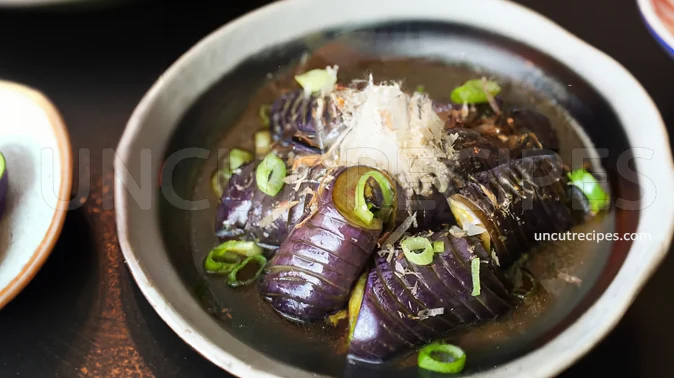
Today, Nasu Nibitashi continues to be a favorite in Japanese households and is commonly served as a side dish in traditional 'Ichiju Sansai' meals, which consist of soup, rice, and three sides. It is also a popular choice in summer due to the belief that the eggplant helps cool the body.
In the grand scope of Japanese cuisine, Nasu Nibitashi represents the principles of simplicity, seasonality, and balance. It's a dish that has endured centuries, carrying with it a taste of history and a sense of cultural continuity. Every bite of this simmered delight is not only a treat to the senses but also an intimate connection to the past, a subtle reminder of the simplicity and elegance inherent in traditional Japanese culinary wisdom.
TIPS:
You might want to try the Agedashi Technique: For an interesting twist, try using the Agedashi technique by dusting the eggplant in potato starch before frying. This technique, used in Agedashi Tofu, creates a delightful textural contrast between the crispy exterior and the soft, melt-in-your-mouth interior.
Smoke Flavor: If you want to add a smoky flavor to your eggplants, consider charring the skin over an open flame before braising. This will give a unique, smoky flavor to your dish. Alternatively, you can use a kitchen torch for this step if you don't have a gas stove.
Change Up The Dashi: Try using different types of dashi for different flavors. For instance, kombu dashi will give a milder, sweeter flavor, while bonito dashi will add a stronger, more umami flavor.
Ginger Technique: Instead of grating the ginger, consider thinly slicing it into julienne strips. This will provide a more intense ginger flavor with each bite.
Presentation: For a more sophisticated presentation, consider using a Japanese "tsuyu no moto" dish or a shallow, wide bowl. This will allow the sauce to spread out, enhancing the visual appeal of the dish.
Sake Pairing: Consider serving the dish with a glass of sake that matches well with the flavors. A Junmai Daiginjo sake with a clean and smooth finish will enhance the umami flavor of the eggplant dish.
Recipe Information
Skill Level
|
Time 30 Minutes |
Price
|
Serves 1 to 8 People |
| Healthiness |
Nutritional Information |
| Ratings (Add Rating & Review) |
Reviews 31 Reviews |
Ingredients:
-
4 Japanese Eggplants
1 Cup Dashi
Chopped Green Onions
2 tablespoons Mirin
2 tablespoons Sake
2 tablespoons Soy Sauce
2 teaspoons Sugar
2 tablespoons Ginger Root
( grated )
1 teaspoon Oil
Allergens
| Soy | Sulphites |
Directions:
01 - Prep the Eggplants: Start by removing the stems from your Eggplants. Then, cut and split each Egglant in half lengthwise, or from top to bottom. This should give you two long pieces of Eggplants per one whole Eggplant.
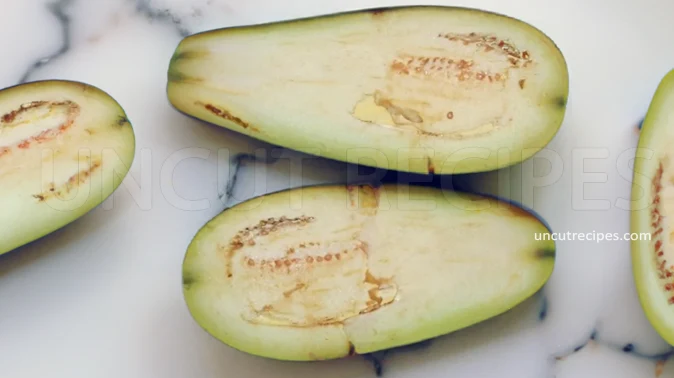
02 - Now, make shallow cuts or slits on the skin of each Eggplant half. This process, known as scoring, allows flavors to seep into the Eggplant during cooking.
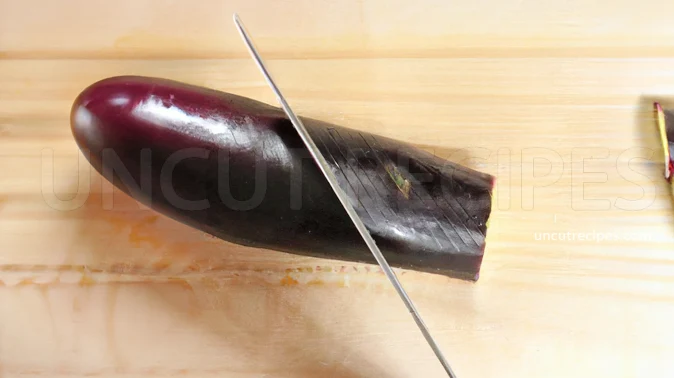
03 - Once you've scored the skin, cut each half again, but this time horizontally. You're now left with bite-sized Eggplant pieces.

04 - Take a medium pot and pour in your Oil. Heat it over medium heat. Wait until the Oil is hot but not smoking - it's ready when a small piece of Eggplant sizzles upon contact.
05 - Cooking the Eggplants: Now, carefully place your Eggplant pieces into the pot, skin side down. Cook these for a couple of minutes until they start to soften.
06 - Flip the Eggplants over and add your Dashi, Soy Sauce, Sake, Mirin, Sugar, and grated Ginger. Reduce heat to low, cover the pot and let the Eggplants cook for 15-20 minutes until they become tender.
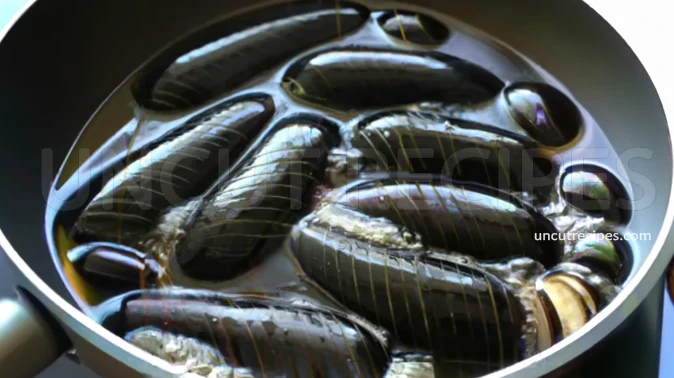
07 - Cooling Down: After the Eggplants are cooked, turn off the heat but don't remove the Eggplants from the sauce right away. Let them cool down in the sauce to soak up even more flavor.
08 - Serving: When ready to serve, plate your Eggplants and pour some of the sauce on top. Garnish with the remaining grated Ginger and a sprinkle of chopped Green Onions. Enjoy!

Notes:
Choosing Eggplants: The recipe calls for Japanese eggplants, which are long and thin with a sweet, delicate flavor and tender skin. If you cannot find Japanese eggplants, you can substitute with other types, such as Chinese eggplants or small, young Italian eggplants.
Prepping Eggplants: To prevent the eggplants from browning, prepare them just before you are ready to cook. Also, scoring the skin not only allows the flavors to seep in but also prevents the eggplant skin from bursting during cooking.
Ginger: Freshly grated ginger will give the best flavor. If you only have ground ginger, use it sparingly as it's more concentrated. About 1/8 teaspoon should be enough.
Storing Leftovers: If you have leftovers, store them in the refrigerator in an airtight container with the sauce. The eggplants will continue to absorb the flavors and can be enjoyed cold or reheated gently in a saucepan.
Reheating: When reheating, do so over low heat to avoid drying out the eggplants.
Serving Suggestion: Nasu Nibitashi is often served at room temperature, making it a good option for a bento box. It can be served as a side dish with rice and other Japanese dishes.
Customizing the Dish: You can add other vegetables or tofu to the pot to cook with the eggplants, just keep in mind the cooking times might vary.
Vegan/Vegetarian Option: To make this dish vegan, ensure your dashi is vegan (kombu or shiitake based) and use a soy sauce substitute that does not contain any animal products.
Nutritional Information
( Per Portion )
|
Calories |
130 kcal (6.5%) |
| Total Carbohydrate | 26g (9.3%) |
| Cholesterol | 0mg (0%) |
|
Total Fat |
3g (4.6%) |
| Saturated Fat | 0.5g (2.5%) |
| Polyunsaturated Fat | 1g (4.2%) |
| Monounsaturated Fat | 1g (6.25%) |
| Trans Fat | 0g |
| Fibers | 6g (24%) |
| Protein | 3g (6%) |
| Sugar | 7g (28%) |
|
Vitamin A |
50 IU (2%) |
|
Vitamin B1 (Thiamin) |
0.1mg (8.3%) |
| Vitamin B2 (Riboflavin) | 0.04mg (3%) |
| Vitamin B3 (Niacin) | 1mg (6.25%) |
| Vitamin B5 (Pantothenic Acid) | 0.4mg (8%) |
| Vitamin B6 | 0.1mg (77%) |
| Vitamin B7 (Biotin) | 5mcg (16.7%) |
| Vitamin B9 (Folate) | 22mcg (5.5%) |
| Vitamin B12 | 0mcg (0%) |
| Vitamin C | 2.5mg (2.7%) |
| Vitamin D | 0 IU (0%) |
| Vitamin E | 0.7mg (4.6%) |
| Vitamin K | 7mcg (5.8%) |
| Choline | 15mg (2.7%) |
| Carnitine | - |
|
Calcium |
20mg (2%) |
|
Chloride |
- |
| Chromium | - |
| Copper | 0.1mg (11.1%) |
| Fluoride | - |
| Iodine | - |
| Iron | 0.4mg (2.2%) |
| Magnesium | 20mg (4.8%) |
| Manganese | 0.25mg (10.9%) |
| Molybdenum | - |
| Phosphorus | 40mg (5.7%) |
| Potassium | 300mg (6.4%) |
| Selenium | 0.5mcg (0.9%) |
| Sodium | 1100mg (47.8%) |
| Sulfur | - |
| Zink | 0.3mg (2.7%) |
* Percent Daily Values are based on a 2,000 calorie diet. Your daily values may be higher or lower depending on your calorie needs.
** Nutrient information is available for all ingredients in this recipe. Amount is based on available nutrient data collected from all over the internet.
(-) Information is not currently available for this nutrient. If you are following a medically restrictive diet, please consult your doctor or registered dietitian before preparing this recipe for personal consumption. |
| Written by: Uncut Recipes | Disclaimer |


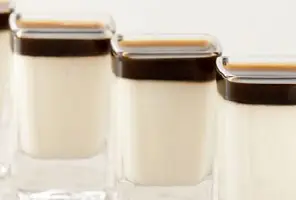
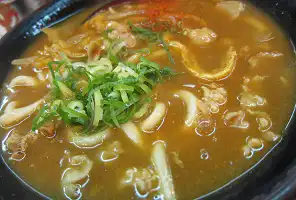
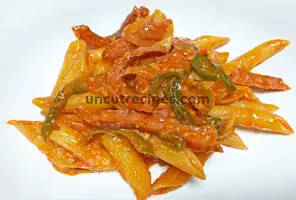
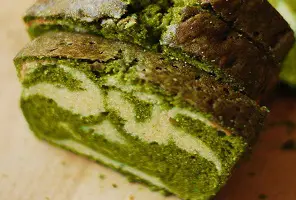
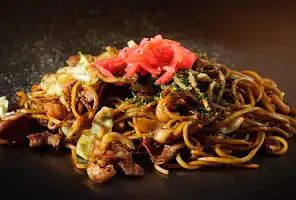







March 20, 2023
Wow, these eggplants turned out tasty! The sauce is good. It's a mix of salty and sweet. Will make it again for sure.